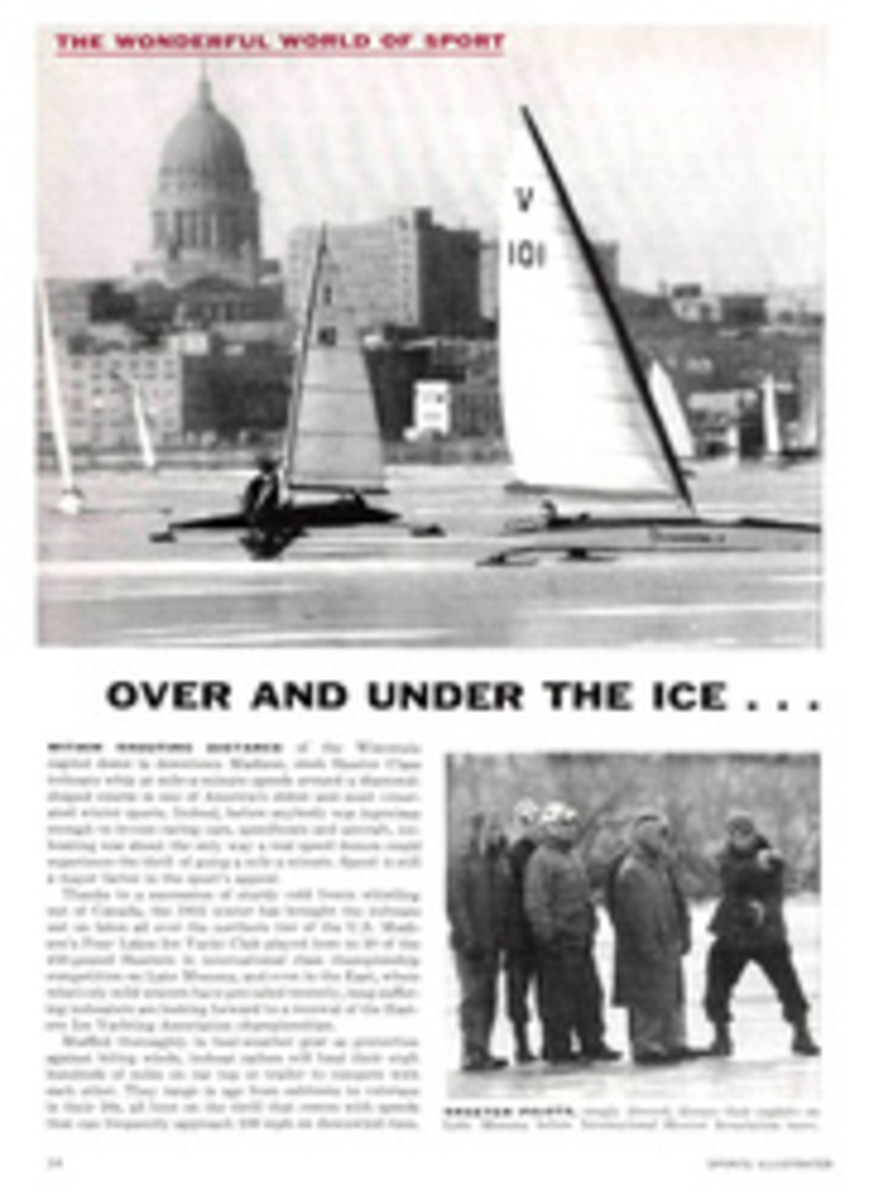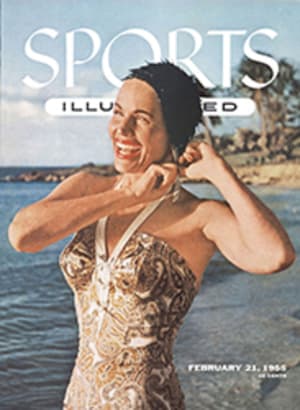
BIG TRAIN VS. BIG MYTH
The Rev. Mason L. Weems knew practically nothing about George Washington's boyhood years at Ferry Farm on the bank of the Rappahannock River in Fredericksburg, Va. Perhaps on the theory that an entertaining fiction is much better than nothing, he wrote (about 1800) The Life and Memorable Actions of George Washington, a highly imaginative effort to endow George with a youth worthy of a future president. One of the "memorable actions" recorded was George's confession of chopping down a cherry tree. Another was his casual pitching feat which spun a stone (or silver dollar) across the Rappahannock.
In planning the 1936 anniversary of Washington's birth, the people of Fredericksburg decided to honor (besides Washington) these two Weems fables. They therefore arranged to plant 200 cherry trees along a boulevard being built to Ferry Farm, which is half a mile from the center of town, and they invited Walter Johnson (the Washington Senators' greatest all-time pitcher) to come down from his Maryland farm and try the silver dollar trick.
In Washington, D.C., Rep. Sol Bloom of New York, director of the U.S. George Washington Bicentennial Commission, put Johnson on the front page by saying he would bet 20 to 1 the Big Train couldn't pitch a dollar across the river. Moreover, contended Bloom, he would fail at a puny task compared to the one accomplished by the father of our country. According to a Colonial map, Bloom said, the Rappahannock in 1748 was 1,320 feet wide. (In 1936 it was 272 feet wide.) Commonwealth Attorney W. B. F. Cole refuted Bloom's statistic: "A high water mark like that would have flooded Fredericksburg off the map. Mary Washington would have had to use a rowboat to get out of her home."
Meanwhile Johnson was warming up his arm for the big chore, now the most important part of the February 22 celebration. He sent the following word to the Fredericksburg cheering section: "I am practicing with a dollar against my barn door. Arm getting stronger, barn door weaker."
Despite the fact that the Rappahannock was edged with ice and its banks snow covered, a shivering 1,000 people surrounded Johnson the afternoon of the 22nd as he took off his coat and advanced to make his toss. Across the river 3,000 more shivering people waited, hoping to catch the coin. Actually, Johnson had three silver dollars. The first two, however, were for practice throws. The third (official) one was engraved with the date and Johnson's name. The first dollar fell into the river. On the second try, however, Johnson succeeded. The third coin flew triumphantly into the waiting crowd, covering a distance of 286 feet 6 inches. Johnson returned to Maryland in triumph. He was perhaps unmindful of the fact that the hero of Rev. Weems's fiction had accomplished the feat while only 11 years old.
PHOTO
SHIRT-SLEEVED JOHNSON FOLLOWED THROUGH ON PERFECT PITCH OF SILVER DOLLAR ACROSS THE ICE-EDGED RAPPAHANNOCK
PHOTO

